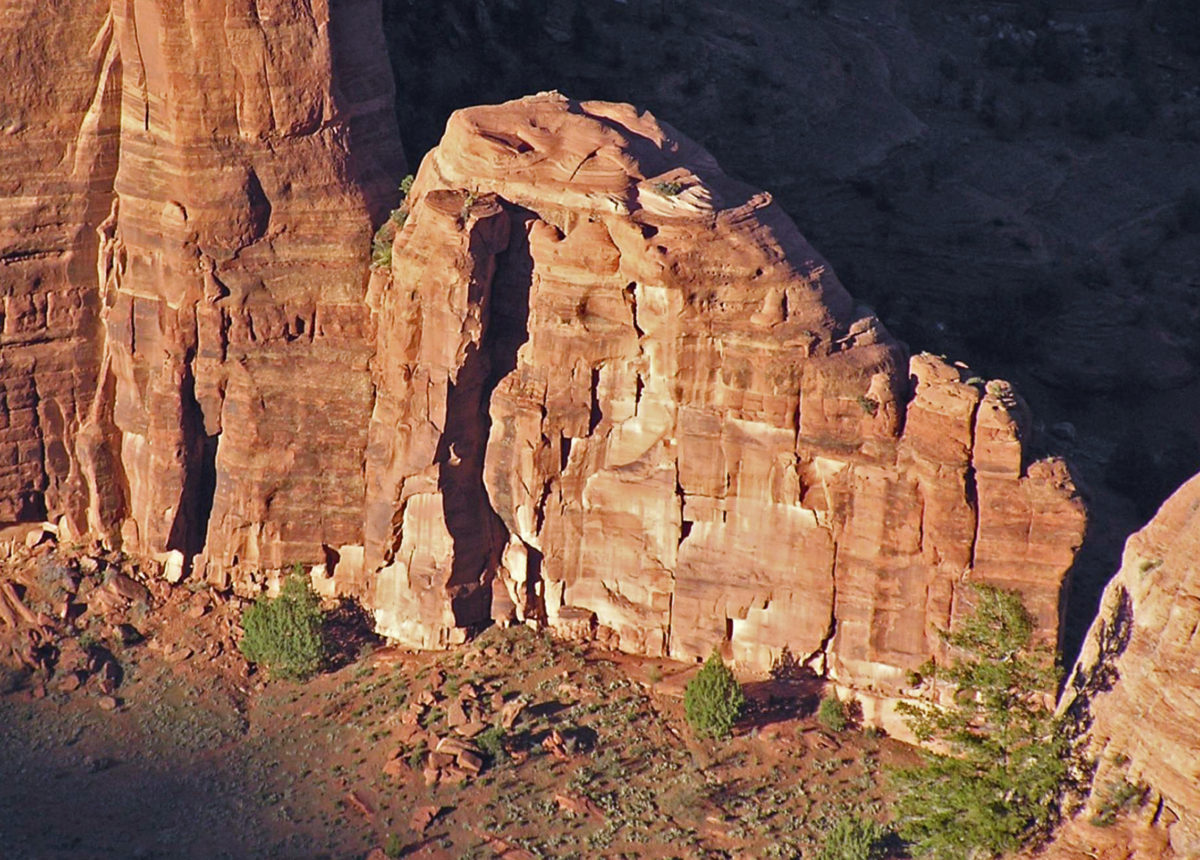by Alan K. Lee
Canyon de Chelly is a strikingly beautiful canyon located on the Navajo Nation in the northeast corner of Arizona. The canyon walls rise vertically from the flat bottom of the canyon as much as 1000 feet to the canyon rim, and everywhere you look there are spectacular rock formations, like the 750 foot spire known as Spider Rock (pictured below).
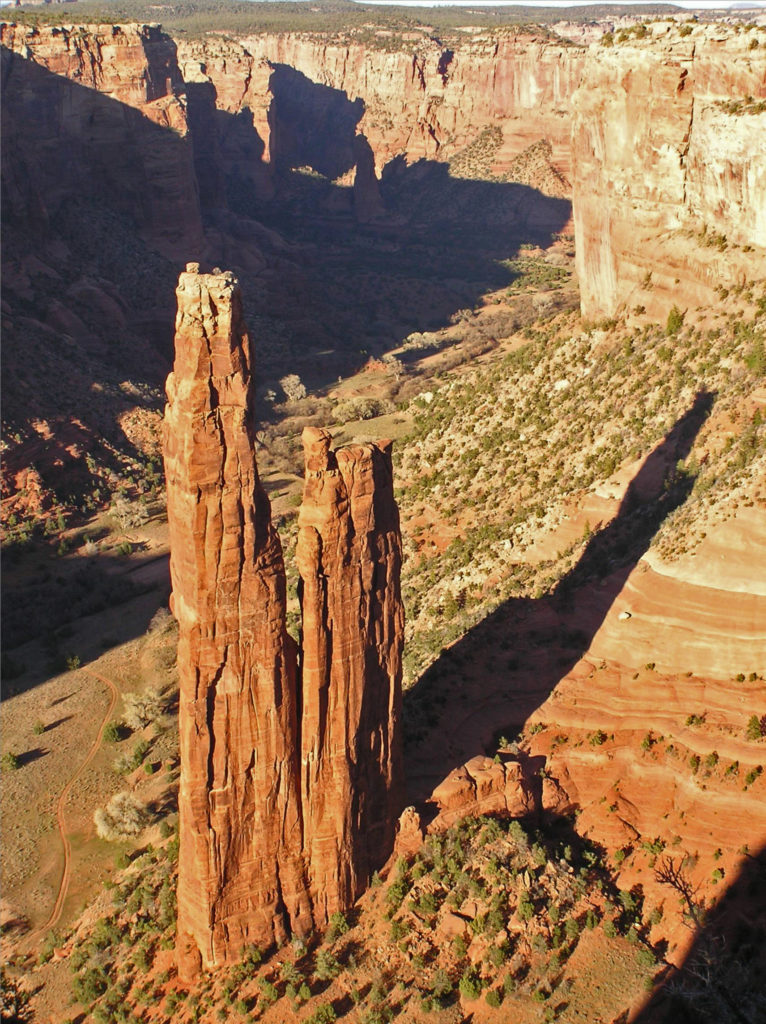 The name Chelly comes from the Spanish spelling of the Navajo name for canyon, tseyi, which translates literally as “within the rock.” Over time the Spanish pronunciation, “chay-ee”, has evolved into the current pronunciation, “shay”.
The name Chelly comes from the Spanish spelling of the Navajo name for canyon, tseyi, which translates literally as “within the rock.” Over time the Spanish pronunciation, “chay-ee”, has evolved into the current pronunciation, “shay”.
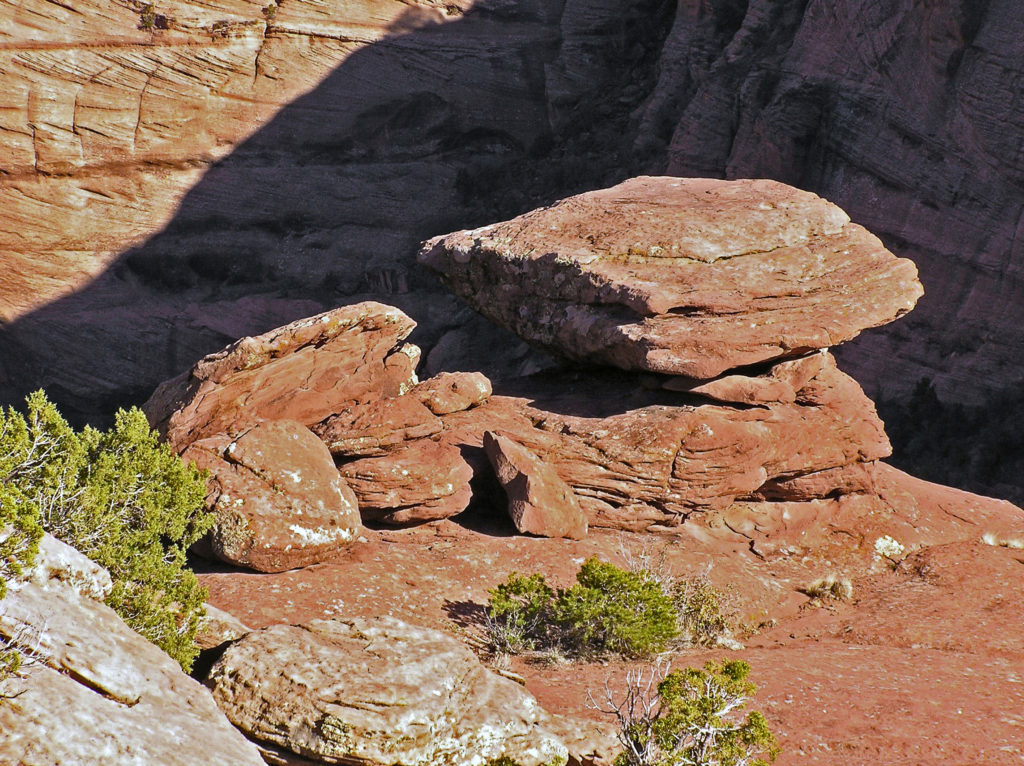
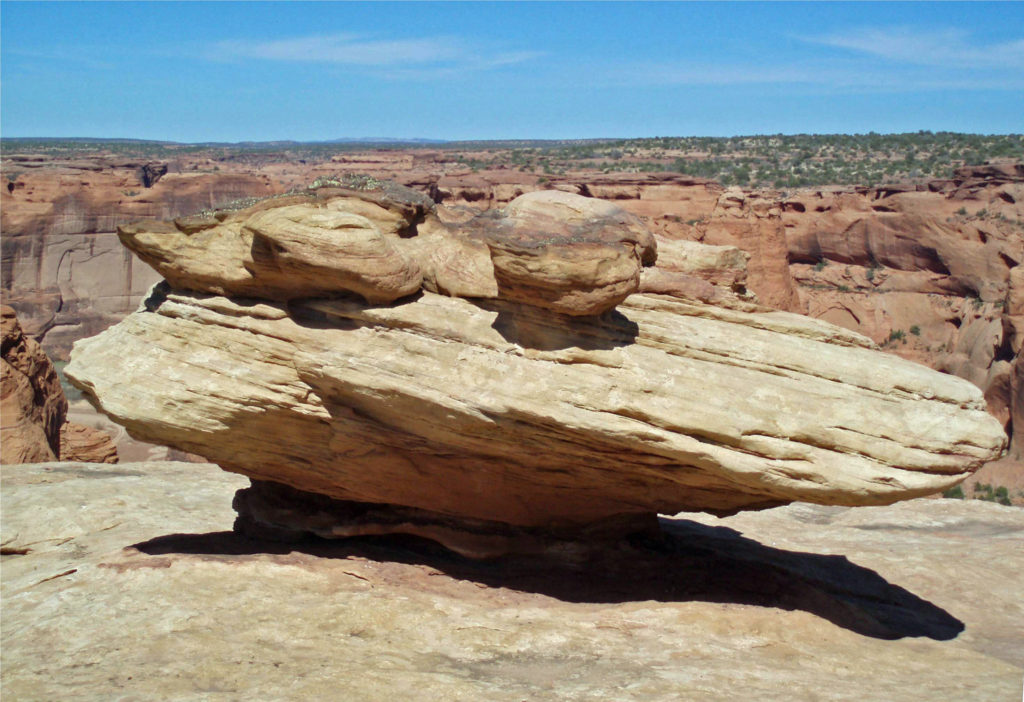 Located a couple of miles east of Chinle, Arizona, the monument’s Welcome Center is a good place to start your visit. Pick up a free map of the monument and watch a short film about the monument to orient yourself. The park rangers can answer any questions you have about tours of the canyon, accommodations, the canyon’s history or geology, what plants and animals you’ll find in the park, or any other questions you might have. There is also a gift shop where souvenirs of your visit can be purchased.
Located a couple of miles east of Chinle, Arizona, the monument’s Welcome Center is a good place to start your visit. Pick up a free map of the monument and watch a short film about the monument to orient yourself. The park rangers can answer any questions you have about tours of the canyon, accommodations, the canyon’s history or geology, what plants and animals you’ll find in the park, or any other questions you might have. There is also a gift shop where souvenirs of your visit can be purchased.
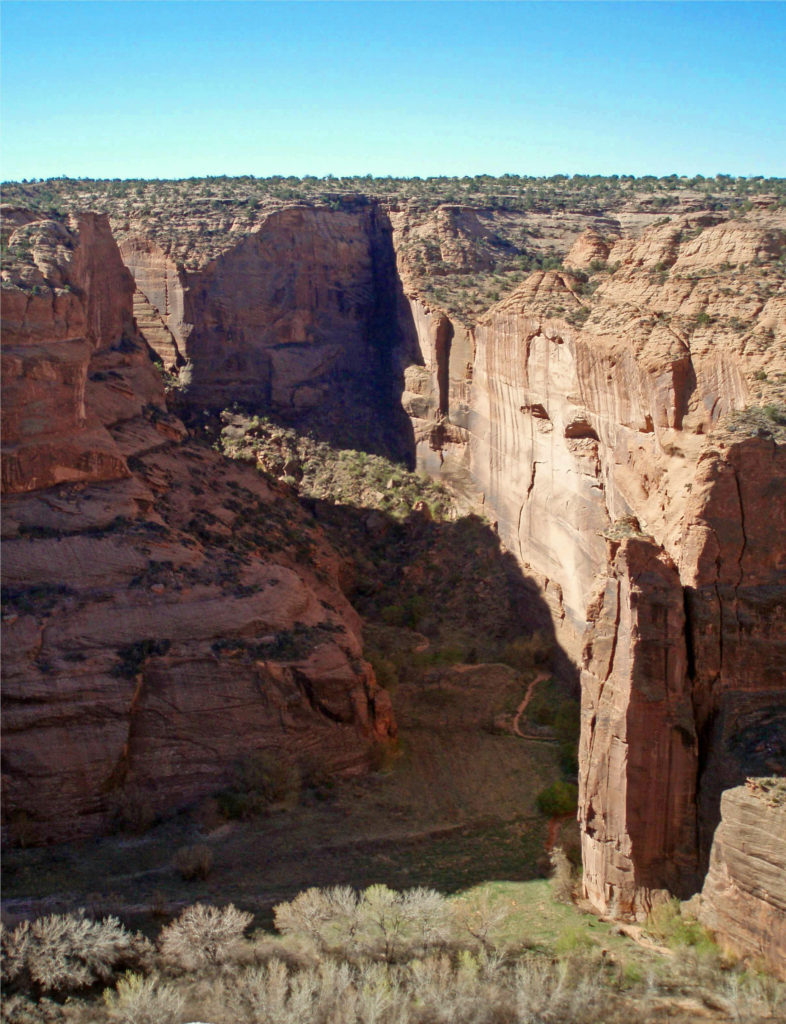
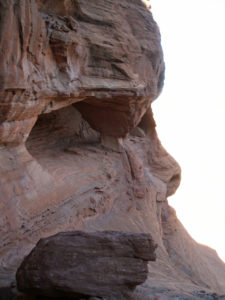 Canyon de Chelly is worth a visit just for the spectacular scenery it affords, but it is also an important cultural and historic site. The canyon is one of the longest continuously inhabited places in North America. The Ancestral Puebloans (also known as the Anasazi) first settled in the area some 4,000 years ago. The canyon was later occupied by the Hopi, descendents of the Ancestral Puebloans, and more recently by the Navaho.
Canyon de Chelly is worth a visit just for the spectacular scenery it affords, but it is also an important cultural and historic site. The canyon is one of the longest continuously inhabited places in North America. The Ancestral Puebloans (also known as the Anasazi) first settled in the area some 4,000 years ago. The canyon was later occupied by the Hopi, descendents of the Ancestral Puebloans, and more recently by the Navaho.
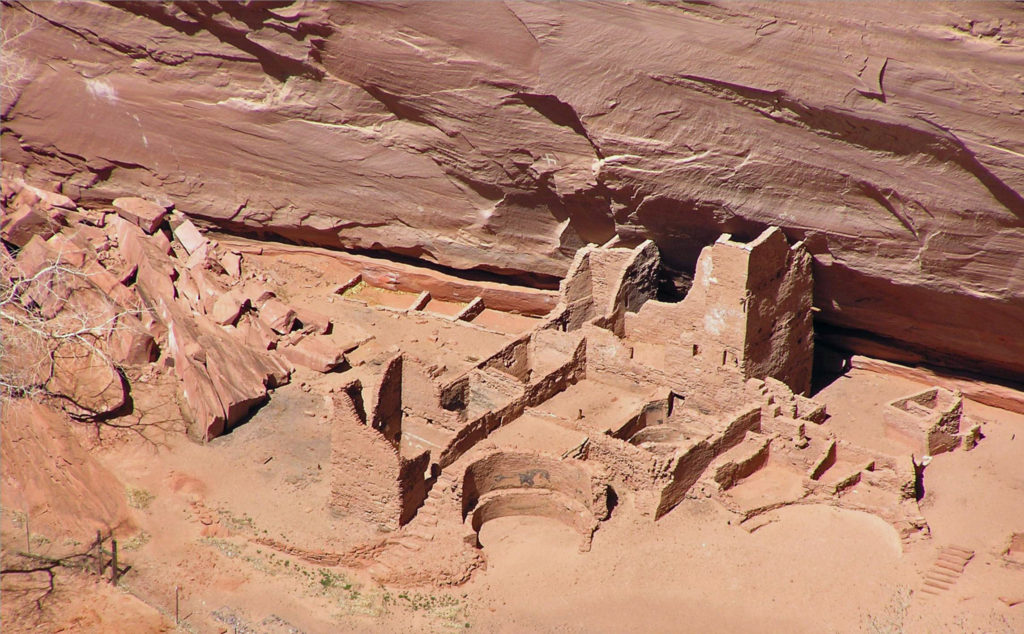
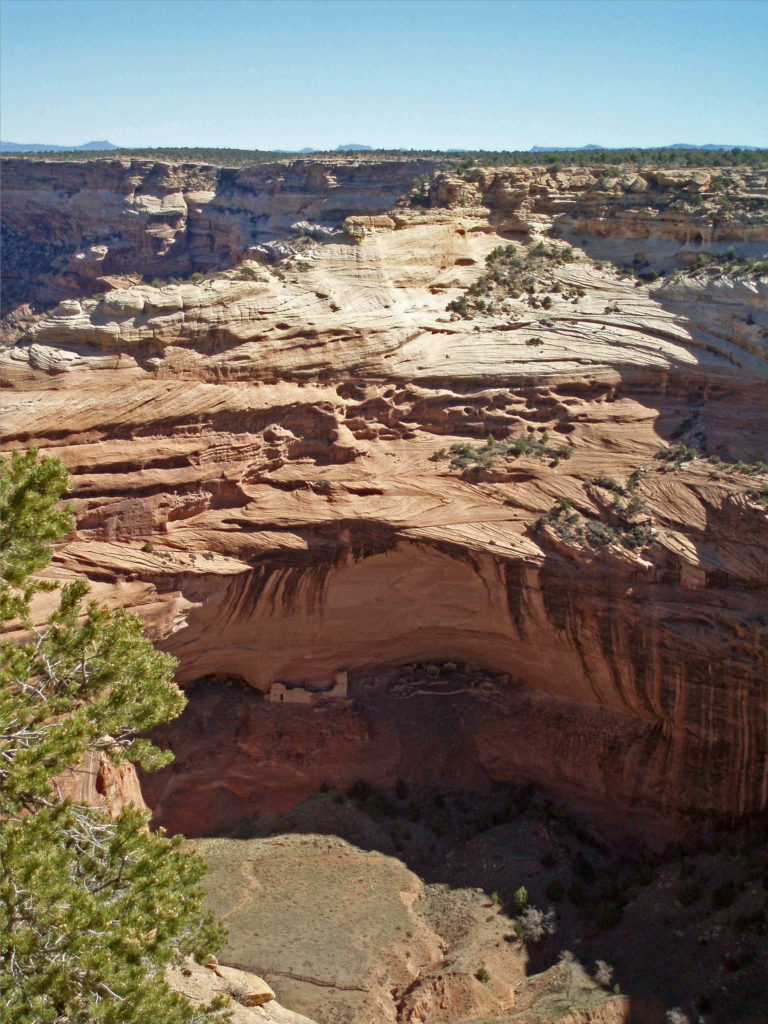 Canyon de Chelly National Monument is actually owned by the Navaho Tribal Trust, not the federal government. It is jointly managed by the tribe and the National Park Service. Two main canyons, Canyon de Chelly and Canyon del Muerto, along with several smaller side canyons, make up the majority of the monument’s 83,000 acres.
Canyon de Chelly National Monument is actually owned by the Navaho Tribal Trust, not the federal government. It is jointly managed by the tribe and the National Park Service. Two main canyons, Canyon de Chelly and Canyon del Muerto, along with several smaller side canyons, make up the majority of the monument’s 83,000 acres.
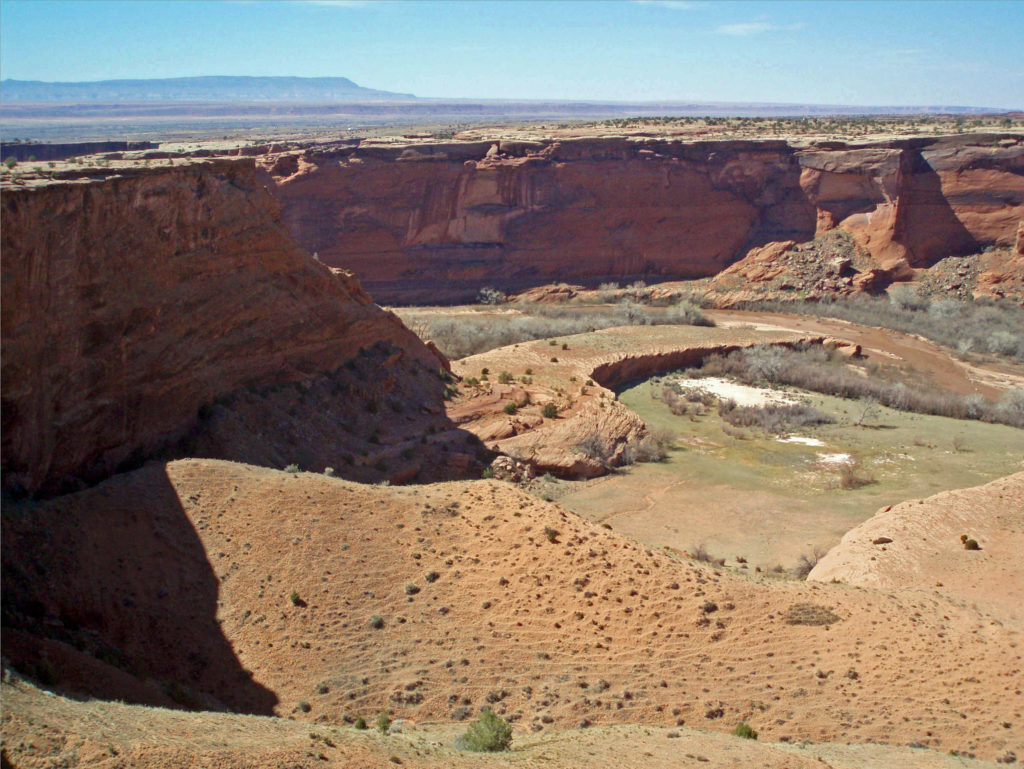
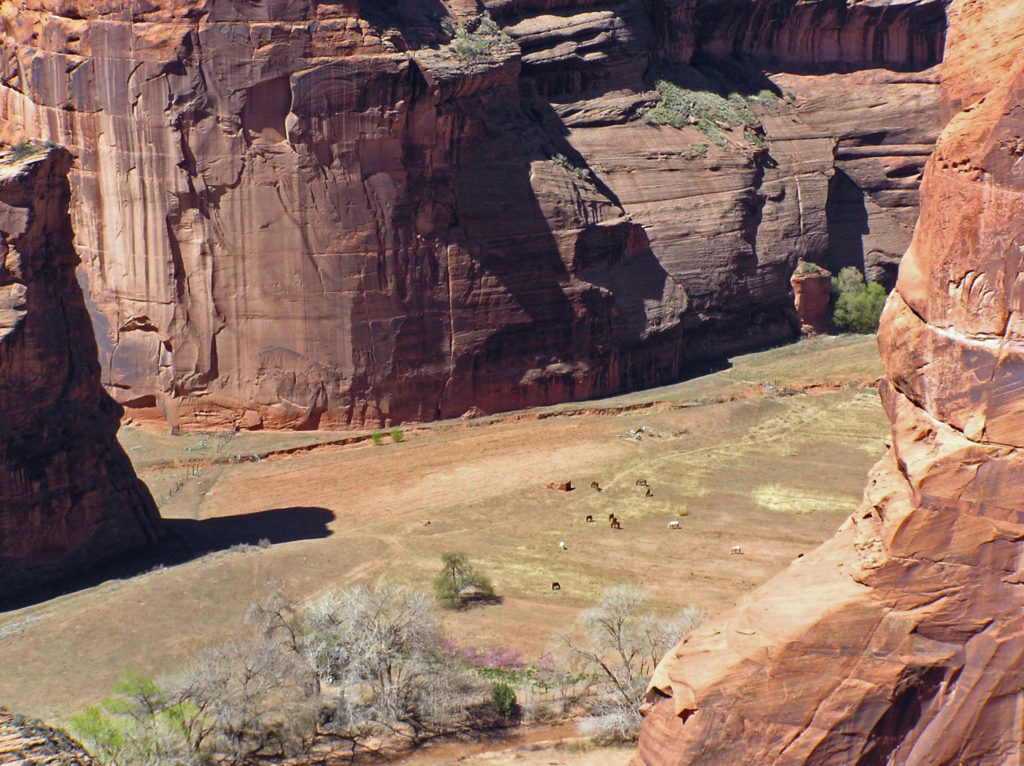
About forty Navaho families live within the monument, some of whom still farm the canyon floor and raise livestock as their ancestors did. Access to the floor of the canyon is restricted to tours led by tribal guides or NPS rangers, except for the White House Ruin Trail, which descends more than 500 feet from south rim of Canyon de Chelly to the bottom of the canyon and across the floor of the canyon to the ruins.
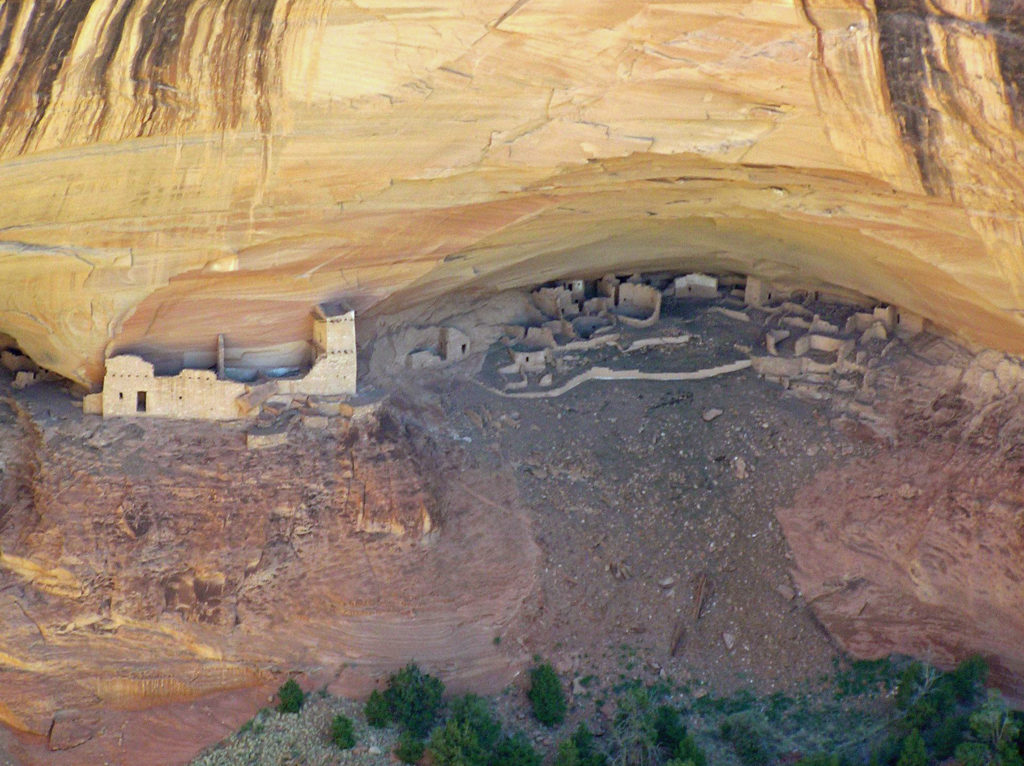
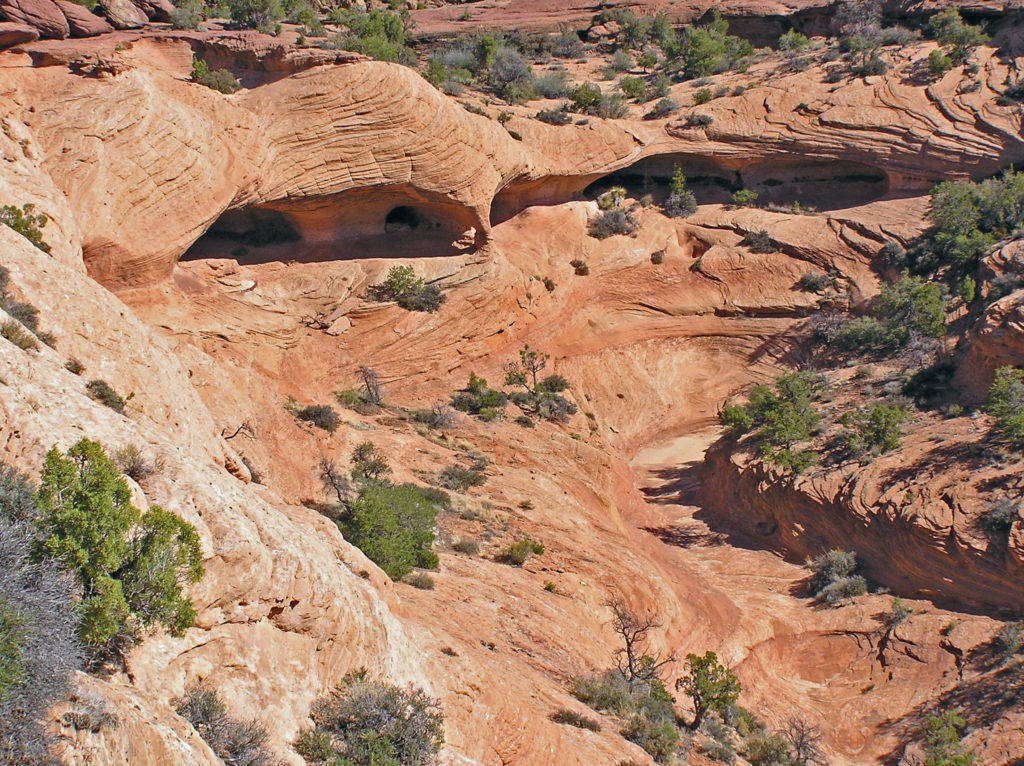
Unless you take one of the guided trips through the canyon, hiking the White House Ruins Trail is the only way to get a close up view of any of Ancestral Puebloan ruins in the canyon. And walking the same ground that the ancestral people walked thousands of years ago and seeing where and how they lived can bring a profound feeling of connection to those people across all those centuries. It is really well worth the effort if you can make the hike.
(February 2022 update: The White House Overlook and Trail are currently closed because of safety and law enforcement concerns. Check the park website Alerts page for current information.)
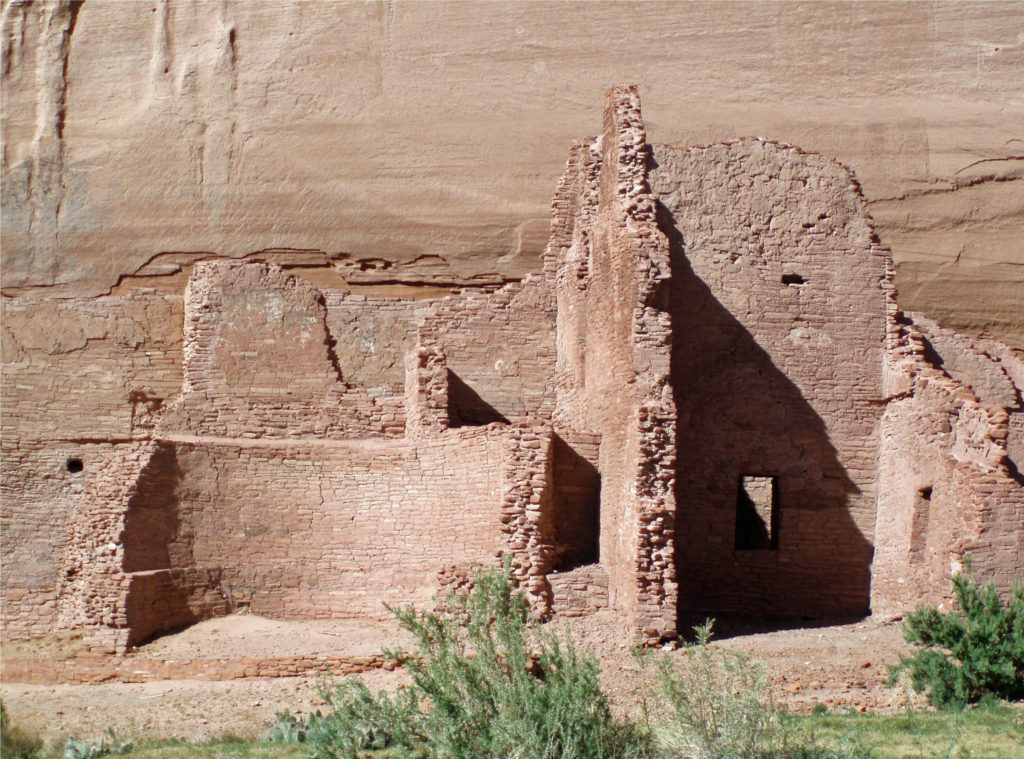
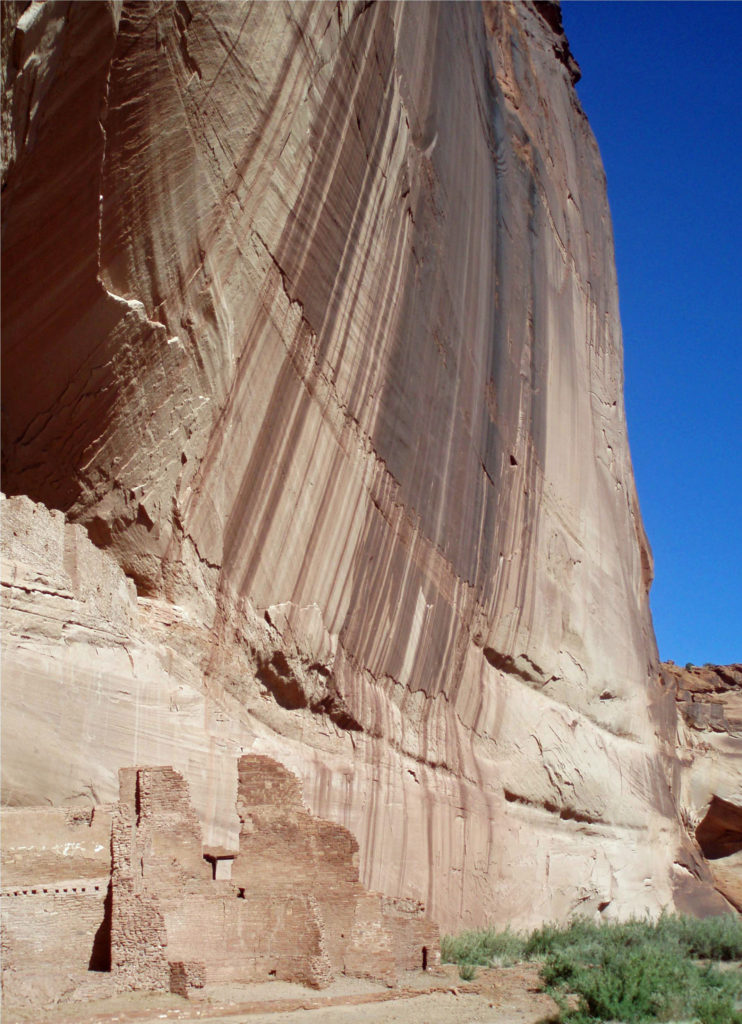
Although access to the canyon floor is restricted, the South Rim Drive along Canyon de Chelly and the North Rim Drive along Canyon del Muerto provide a total of ten overlooks into the canyons. Plan to spend at least half a day touring the rim drives. Add another two hours or more if you plan to hike to the White House Ruins. And if you want to tour the canyon floor, there are half and full day jeep, horseback, and hiking options available. A list of tour operators can be found here. There are also free ranger led hikes. Ask at the Welcome Center about availability and schedules.
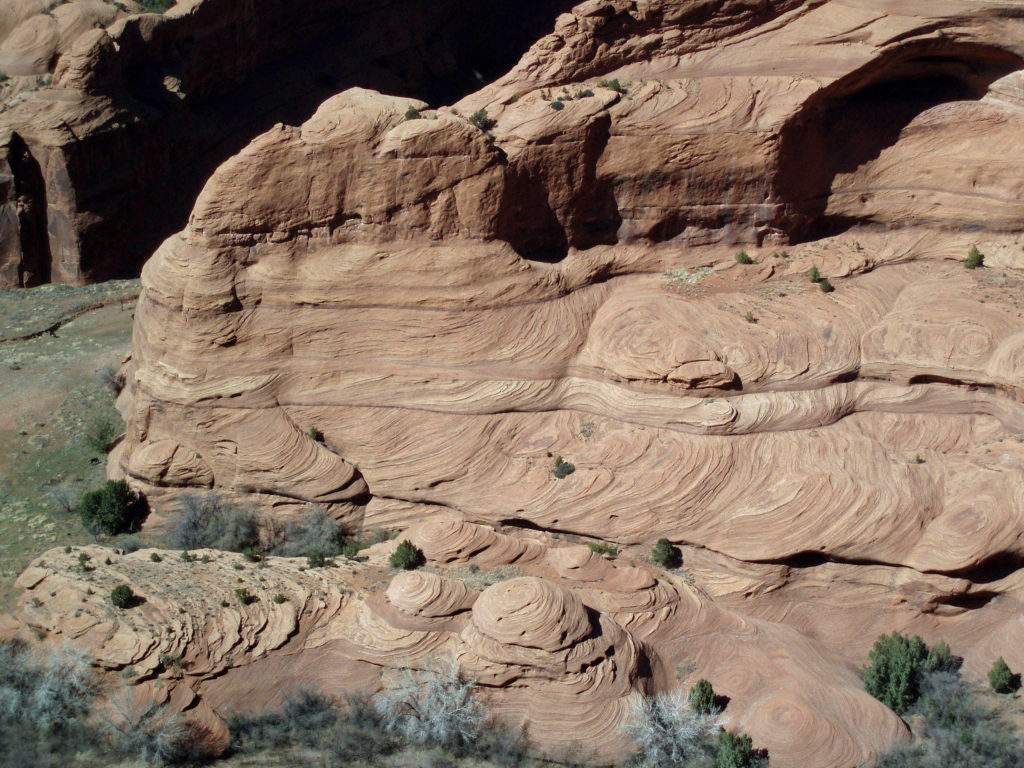
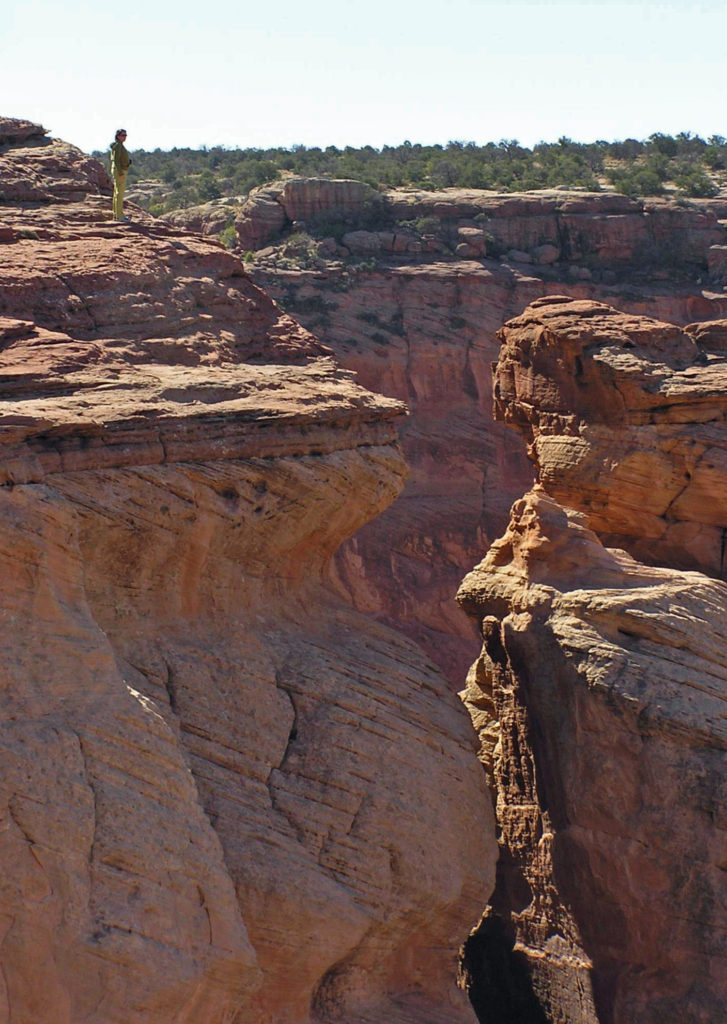
My wife and I have taken many trips to Arizona over the years. We have been fortunate enough to have visited many of the parks and other natural and culturally significant sites in the state. Canyon de Chelly stands out as one of the best, both scenically and culturally. The photos here are from a trip we took that also included a visit to Chiricahua National Monument. That was a number of years ago, but the memories remain fresh in mind. And once the corona virus pandemic ends and we can all travel safely again, I hope to go back and revisit the canyon.
Pandemic update: As of February 2022, the park is open. Masks are required in all indoor areas and outdoors where social distancing is not possible. There are no other requirements.
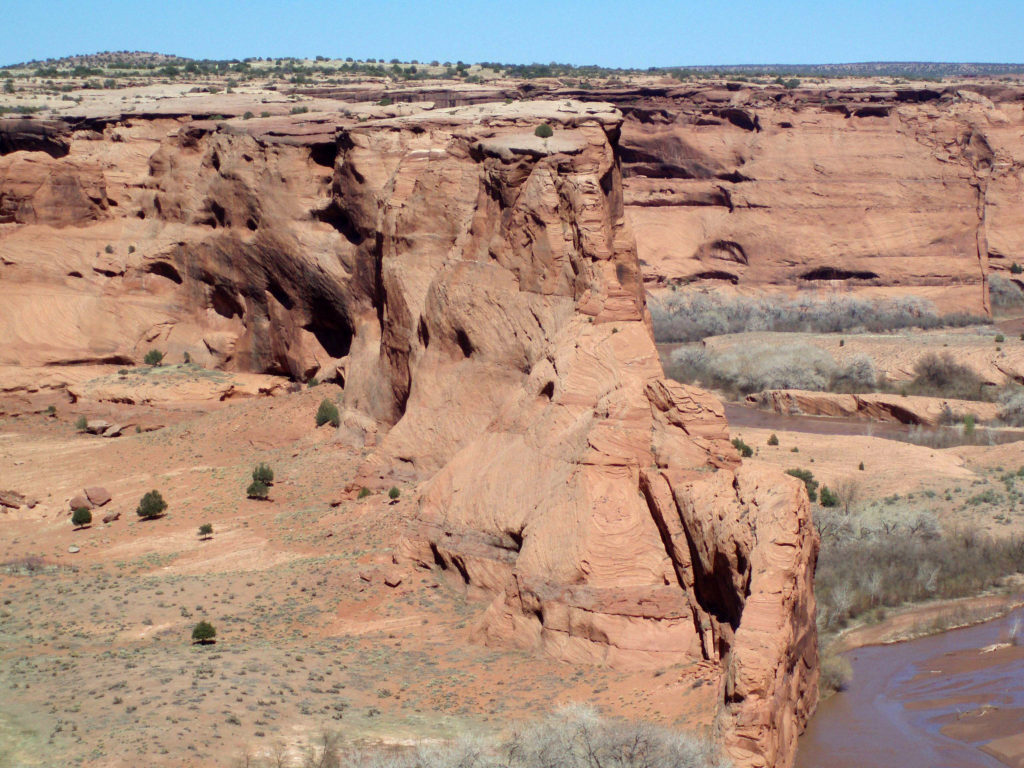
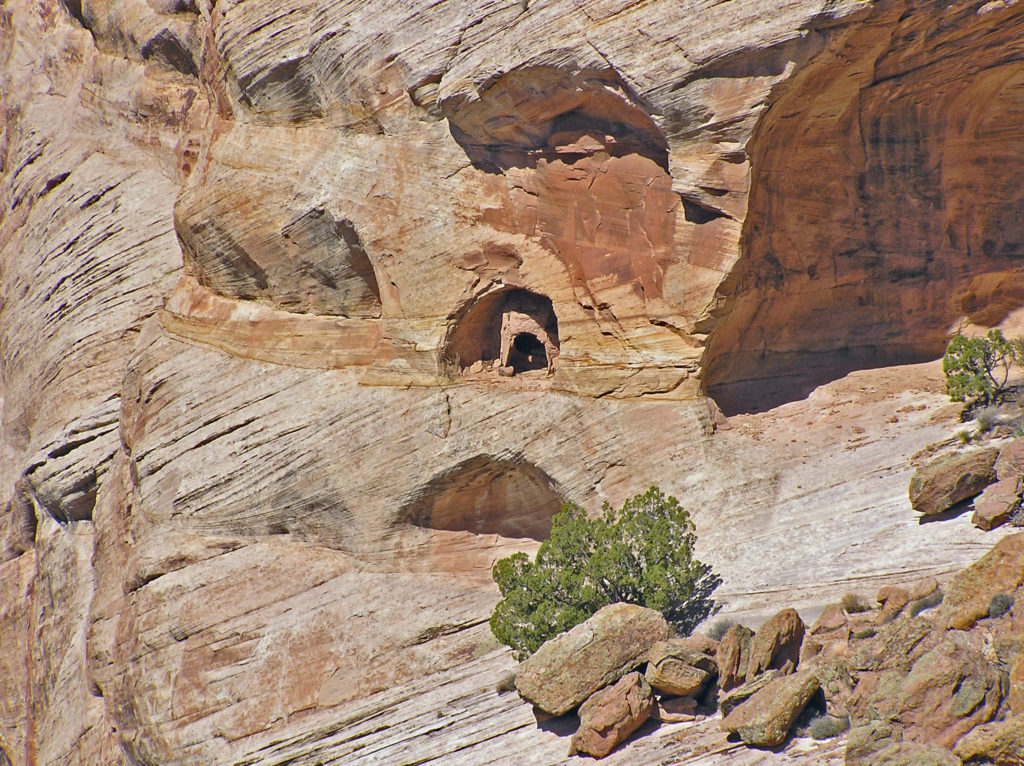 Originally posted May 14, 2020. Updated and re-posted February 14, 2022.
Originally posted May 14, 2020. Updated and re-posted February 14, 2022.
All photos © Alan K. Lee

